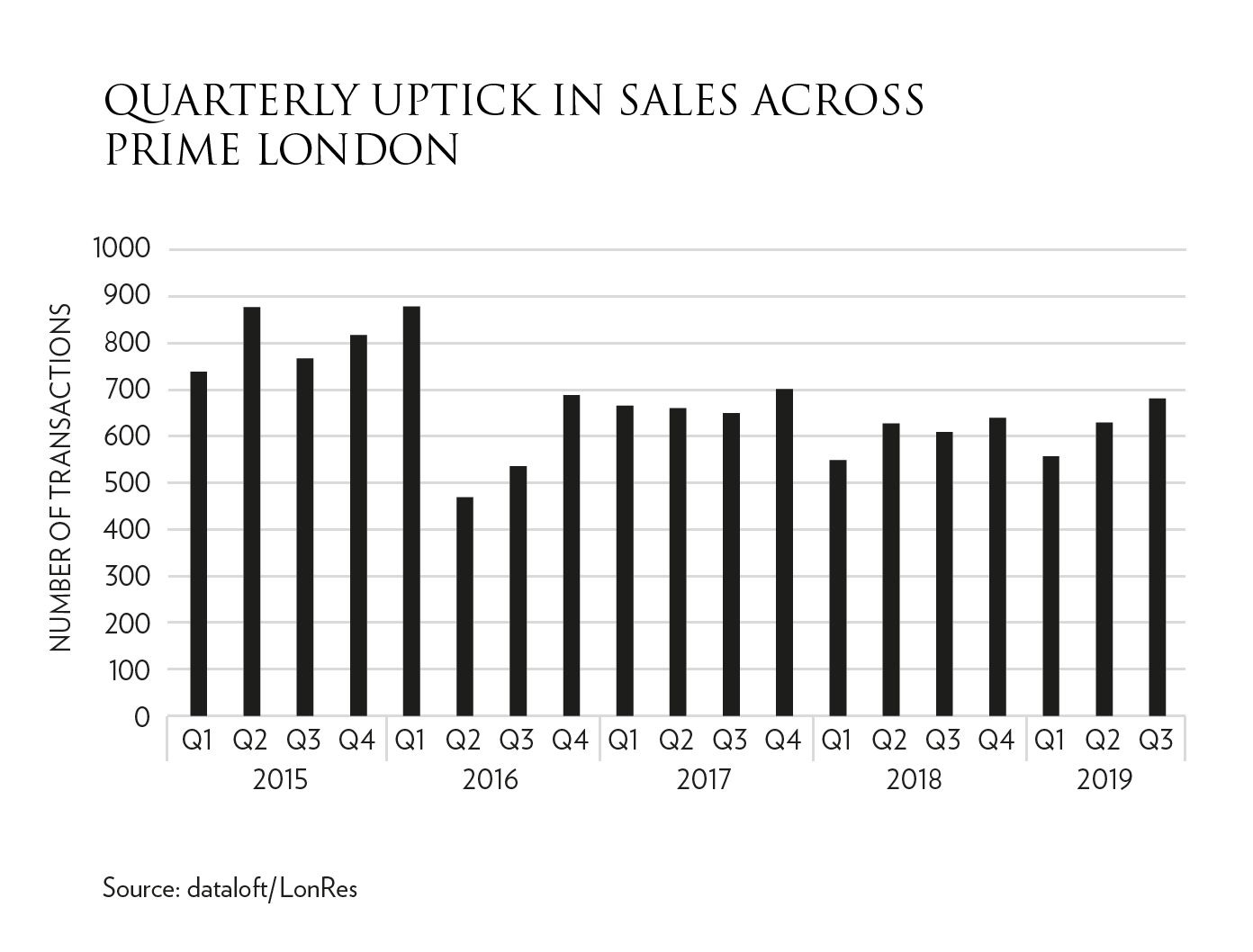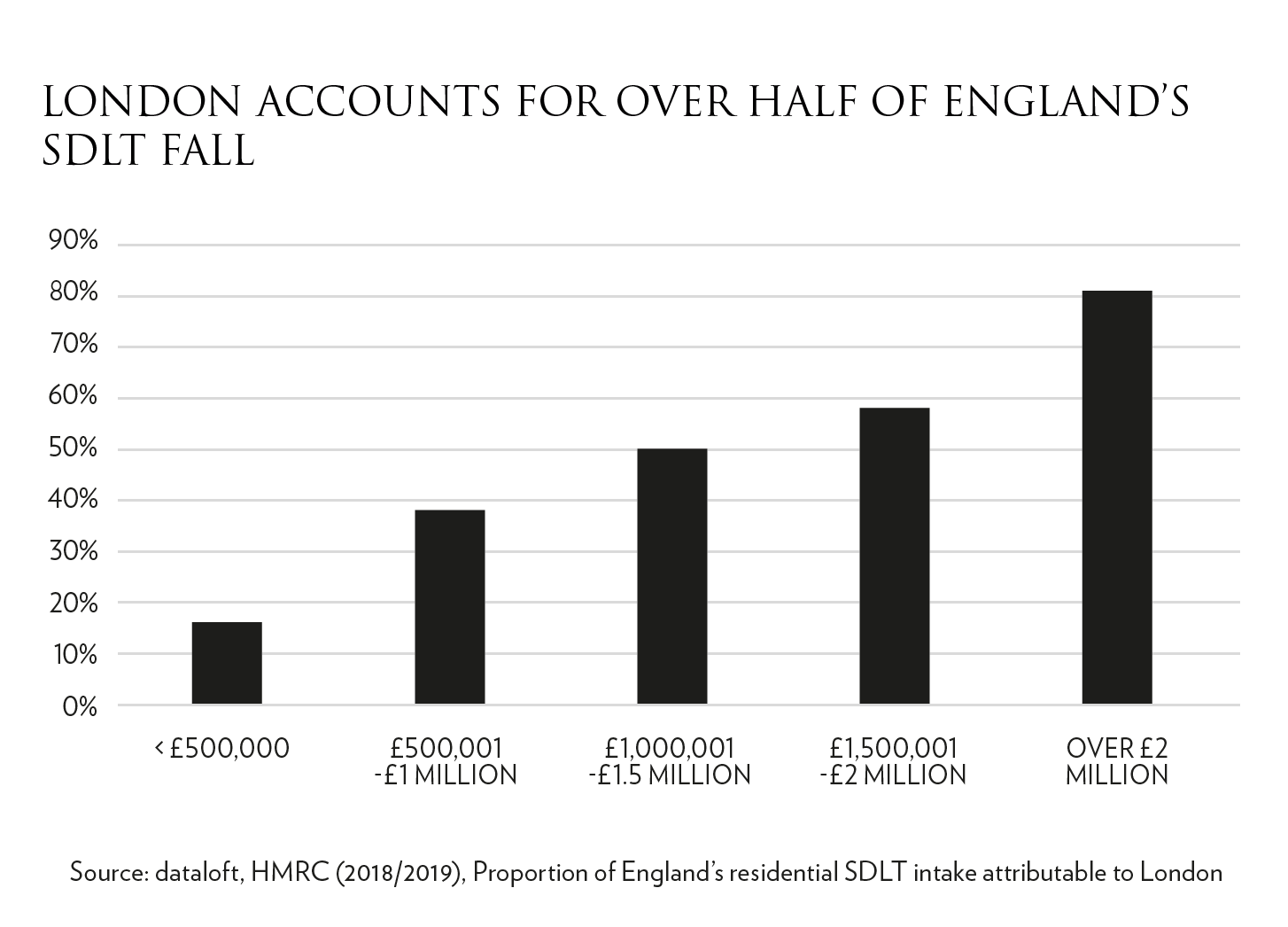 There has long been a symbiotic relationship between rental and wage growth. However, at 3.8% wage growth is considerably outpacing rental growth across both the UK and the capital at present. At 0.9%, the annual growth in rental values in London in the year to September has remained broadly static since May, a marked improvement on the -0.2% recorded in September 2018. Rental values in prime central London continue to edge upwards, up 0.5% quarter on quarter and just -0.1% lower than a year ago, according to Knight Frank. Sentiment among London surveyors for rental price growth over the next three months remains positive and tenant demand remains steady.
There has long been a symbiotic relationship between rental and wage growth. However, at 3.8% wage growth is considerably outpacing rental growth across both the UK and the capital at present. At 0.9%, the annual growth in rental values in London in the year to September has remained broadly static since May, a marked improvement on the -0.2% recorded in September 2018. Rental values in prime central London continue to edge upwards, up 0.5% quarter on quarter and just -0.1% lower than a year ago, according to Knight Frank. Sentiment among London surveyors for rental price growth over the next three months remains positive and tenant demand remains steady.
 To date in 2019 new instructions to the market in prime central London have fallen 7%, with 11% fewer properties listed during Quarter 3 compared to a year ago. While many have chosen to enter the rental market as ‘accidental landlords’, opting to rent not sell during the sales market downturn, many may well be considering their options due to the capital gains tax changes set to be introduced in 2020. Investors will wait with bated breath to see whether the budget imposes any further reforms to the buy-to-let sector. The situation is most acute at the lower end of the market, with listings for properties less than £500 per week down a fifth. Knight Frank report 2.5% annual growth in rental values for properties priced £250-£500 per week in prime central London, with annual growth of 1.6% across outer London. This points to a demand/supply imbalance in this market. Listings of, and tenancies agreed for prime properties (+£5,000 per week) remain stable, property remaining in demand and attracting interest from both domestic and overseas purchasers watching and waiting in the current climate.
To date in 2019 new instructions to the market in prime central London have fallen 7%, with 11% fewer properties listed during Quarter 3 compared to a year ago. While many have chosen to enter the rental market as ‘accidental landlords’, opting to rent not sell during the sales market downturn, many may well be considering their options due to the capital gains tax changes set to be introduced in 2020. Investors will wait with bated breath to see whether the budget imposes any further reforms to the buy-to-let sector. The situation is most acute at the lower end of the market, with listings for properties less than £500 per week down a fifth. Knight Frank report 2.5% annual growth in rental values for properties priced £250-£500 per week in prime central London, with annual growth of 1.6% across outer London. This points to a demand/supply imbalance in this market. Listings of, and tenancies agreed for prime properties (+£5,000 per week) remain stable, property remaining in demand and attracting interest from both domestic and overseas purchasers watching and waiting in the current climate.
Past issues
- Spring 2014
- Summer 2014
- Autumn 2014
- Winter 2015
- Spring 2015
- Autumn 2015
- Winter 2016
- Spring 2016
- Summer 2016
- Autumn 2016
- Winter 2017
- Spring 2017
- Summer 2017
- Autumn 2017
- Winter 2018
- Spring 2018
- Summer 2018
- Autumn 2018
- Winter 2019
- Spring 2019
- Summer 2019
- Autumn 2019
- Winter 2020
- Summer 2020
- Autumn 2022
- Winter 2023
- Spring 2023
